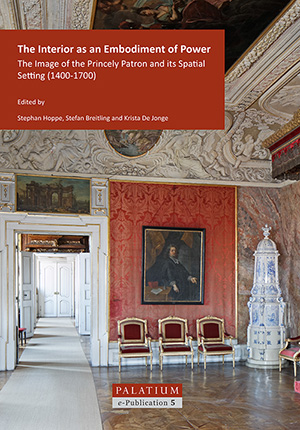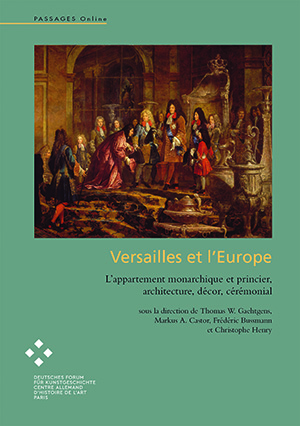Seeger, Ulrike
The Interior as an Embodiment of Power: The Image of the Princely Patron and its Spatial Setting (1400-1700)
This volume is dedicated to the study of the in- and outside of princely residences and of their setup as the stage for a developing European early modern court culture. At a time of increasing aristocratization (1400-1700) and with many new nascent princely courts, both the princely person and the performance of princely power required an appropriate type of elaborate backdrop as its setting. Even though such an interest in the palace interior and its functions is not entirely new, interior architecture and court culture have only recently come to be seen as two sides of the same medal: embodiment and expression of the princely presence.
Therefore, the essays included focus in particular on diverse types of functions that palaces and apartments, state rooms and privy chambers had to fulfil at certain periods and in certain residential contexts between the ages of feudalism and absolutism at courts in London, Edinburgh, Neuburg am Inn, Karlstein and Prague, Červený Kameň and Ludwigsburg. They compare and contrast specific local examples with international trends such as, for example, the palace and court ceremonial developed at or adapted to diverse circumstances in Burgundy, Spain or Lithuania. Consequently, the aim of this volume consists of the combination of personal and dynastic ambitions with fashionable trends and court etiquette followed by royalty and minor princes alike during a period of calculated magnificence. It considers processional routes towards the presence of the ruler or towards its image. Thereby, it helps to define the complementary roles of residential interiors and of the courtly personnel at the same time.
The ten papers collected in this volume were first presented at the PALATIUM colloquium The Interior as an Embodiment of Power―The Image of the Prince and its Spatial Setting (1400–1700), organized by Stephan Hoppe, Krista De Jonge and Stefan Breitling and held in Bamberg in October 2013.
Versailles et l'Europe: L’appartement monarchique et princier, architecture, décor, cérémonial
Der vorliegende Band untersucht den Einfluss eines der brillantesten Repräsentationsleistungen der Frühen Neuzeit auf die europäischen Höfe des 17. und 18. Jahrhunderts. Das Versailler Schloss, ein „Showroom“, der die französischen Luxusgüter über die Grenzen hinaus bekannt und zum begehrten Gut machte, zog die Blicke aller Regenten der Zeit auf sich. Doch wenngleich von Künstlern und Kunsthandwerkern, die sich an den europäischen Höfen niederließen, zahlreiche Formen und Ideen übernommen wurden, darf die Beharrlichkeit der lokalen Traditionen dennoch nicht unterschätzt werden.
Beginnend mit einer Analyse des Versailler Appartements nach Form und Funktion wird das in Frankreich entwickelte Modell in seiner Bedeutung für die Konzepte des Appartements der europäischen Höfe betrachtet. Die Beiträge analysieren das Zusammenspiel von Architektur, Dekor und Zeremoniell und die besondere Bedeutung des Appartements für die höfische Repräsentation. Die räumliche Disposition tritt als komplexes Verweissystem hervor, das die Inszenierung der Macht und die Zugänglichkeit des Regenten bestimmte. Die Logik der Ausstattungssysteme erschließt sich nur in interdisziplinärer Betrachtung, die auch die sozialen und politisch--historischen Bedingungen berücksichtigt. Bereits vorhandene Traditionen der europäischen Häuser werden in diesem Prozess zwischen Übernahmen und Transformationen neu konfiguriert.
Der erste Teil widmet sich dem in Frankreich entwickelten Modell des Appartements und versucht die komplexe Entwicklung in Versailles bis 1701 nachzuvollziehen, in der die Chambre de Parade zum Herzstück des Schlosses wurde. Im zweiten Teil beleuchten die Fallstudien zu Residenzen der deutschsprachigen Länder den komplexen Austausch und die Vielfalt der heterogenen Lösungen. Mit Beiträgen zu einigen wesentlichen europäischen Höfen in England, Holland, Schweden, Polen, Spanien und Italien schließt die Studie ab.








